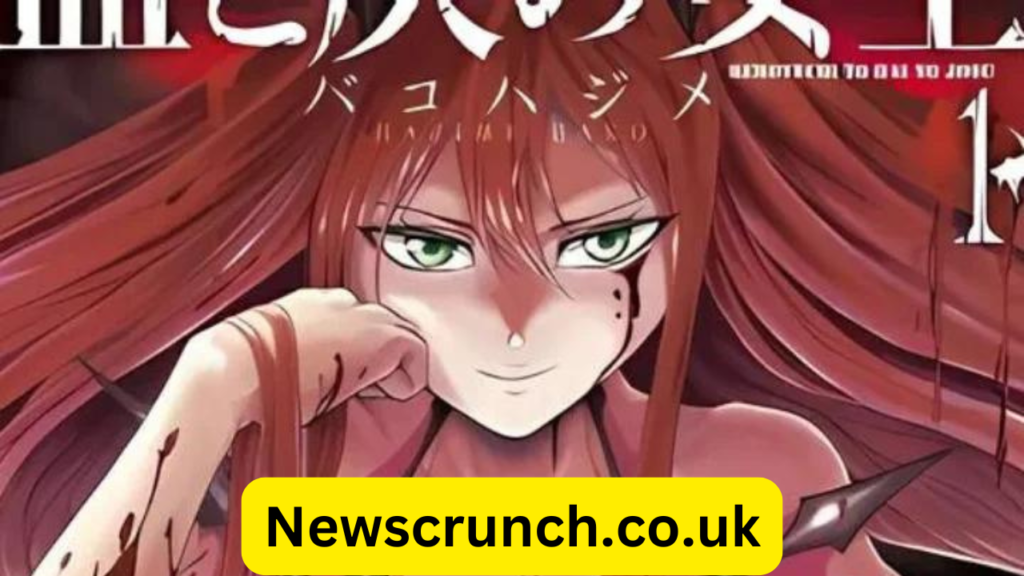“Removechi to Hai no Joou,” which interprets to “Removechi and the Queen of Ash,” is a compelling paintings that intricately weaves topics of dark fable, identity, and existential struggle. This narrative delves deep right into a global fraught with challenges, where characters confront their deepest fears and goals. In this newsletter, we are able to discover the tale’s plot, themes, characters, and the cultural context that informs this gripping story.
Setting the Stage: The World of Removechi

The universe of “Removechi to Hai no Joou” is wealthy and layered, characterised via its bleak landscapes and difficult societal systems. This global, marked by means of ash and decay, mirrors the inner turmoil of its population. The tale unfolds in a realm wherein magic and fact intertwine, developing a bright backdrop for the characters’ struggles.
The Ashen Lands
The setting, regularly called the Ashen Lands, is a desolate terrain dominated by way of the remnants of once-thriving civilizations. The air is thick with ash, a symbol of loss and rot. This environment serves as a mirrored image of the characters’ emotional states, encapsulating their struggles towards outside and inner adversities.
Magic and Its Consequences
Magic performs a critical position within the narrative, yet it is portrayed with a sense of foreboding. It is not merely a tool for the characters; rather, it often comes with dire consequences. This complicated dating with magic increases questions about electricity, obligation, and the sacrifices one must make within the pursuit of greater desires.
Plot Overview
The narrative facilities at the protagonist, Removechi, who embarks on a perilous journey to confront the enigmatic Queen of Ash. This quest is not just a bodily journey; it symbolizes Removechi’s inner battle to reclaim identity and cause.
The Call to Adventure
Removechi’s journey starts offevolved when the Ashen Lands are threatened via a growing darkness emanating from the Queen’s domain. The once-vibrant areas are falling into depression, prompting Removechi to do so. Driven through a preference to save the remnants of the sector and her own experience of self, she sets out on a quest to confront the Queen.
Encounters and Trials
Throughout her journey, Removechi encounters numerous beings, every representing unique elements of her psyche. These encounters are not mere limitations but serve as catalysts for her private growth. From historical guardians to corrupted souls, every individual gives insights into Removechi’s fears, ambitions, and vulnerabilities.
The Revelation
As Removechi delves deeper into the Queen’s realm, she uncovers hidden truths approximately her past. These revelations pressure her to confront painful memories and question her information of identification and reason. The narrative masterfully intertwines her internal war with the external challenges she faces, growing a dynamic interplay that drives the story ahead.
The Climax and Resolution

The climax occurs for the duration of the final war of words with the Queen of Ash, in which Removechi should make a harrowing preference. This second encapsulates the important themes of sacrifice, resilience, and the pursuit of truth. The decision sees Removechi emerging transformed, having confronted her fears and embraced her real self.
Themes Explored
Identity and Self-Discovery
One of the middle issues of “Removechi to Hai no Joou” is the quest for identity. Removechi’s adventure is not just about defeating the Queen; it is about expertise who she is amidst chaos. The narrative activates readers to reflect on their personal identities and the elements that shape them.
The Nature of Power
The story raises important questions about electricity and its implications. Removechi’s interactions with magic illustrate the idea that strength can corrupt, and the picks made in pursuit of energy frequently come at a fee. This topic resonates deeply in modern society, wherein the quest for strength can lead to moral dilemmas and moral compromises.
Darkness and Redemption
The juxtaposition of darkness and redemption permeates the narrative. Characters who to start with seem as antagonists frequently have complicated backstories, revealing their own struggles with despair and loss. This complexity encourages empathy and information, illustrating that redemption is feasible even inside the darkest of circumstances.
Character Analysis
Removechi
Removechi is a multifaceted protagonist whose evolution drives the story. Initially portrayed as unsure and conflicted, she grows into a powerful figure by way of confronting her fears. Her adventure of self-discovery is marked by way of moments of vulnerability and energy, making her a relatable and compelling character.
The Queen of Ash
The Queen of Ash serves as both an antagonist and a mirrored image of Removechi’s fears. Her person embodies the outcomes of unchecked power and the emotional toll of loss. As the story unfolds, the complexity of her motivations is found out, blurring the lines between proper and evil.
Supporting Characters
Several assisting characters enhance the narrative, each contributing to Removechi’s increase. These encompass:
- The Guardian: A smart determine who offers guidance and challenges Removechi to confront her fears. His presence symbolizes the importance of mentorship and help in the adventure of self-discovery.
2. The Fallen Soul: A tragic individual representing the dangers of succumbing to despair. Their story serves as a cautionary tale, emphasizing the need for resilience and hope.
3. The Trickster: A whimsical yet insightful man or woman who gives comedian comfort while additionally pushing Removechi to rethink her technique to demanding situations.
Cultural Context and Influences
“Removechi to Hai no Joou” is deeply rooted in cultural influences that tell its issues and characterizations. Drawing from diverse mythologies and folklore, the narrative weaves together elements of Eastern and Western traditions.
Eastern Philosophy
The idea of “chi” displays Eastern philosophies that emphasize the stability of strength and the interconnectedness of all beings. This philosophy resonates throughout Removechi’s adventure, as she learns to harness her inner energy and navigate the complexities of her emotions.
Western Fantasy Tropes
While the tale is steeped in Eastern traditions, it also includes Western myth tropes, together with the archetypal hero’s journey. This combination of impacts creates a rich narrative tapestry that appeals to a various audience.
Visual and Artistic Elements
The storytelling in “Removechi to Hai no Joou” is complemented by its visible factors. The paintings often displays the desolate beauty of the Ashen Lands, using color palettes that evoke a feel of depression and despair. Character designs variety from ethereal to ugly, mirroring their emotional states and improving the narrative’s thematic intensity.
Symbolism
The use of symbolism is regularly occurring all through the work. For instance, ash serves as a effective image of both destruction and rebirth, reflecting the duality of Removechi’s adventure. Similarly, the Queen’s castle, embellished with decaying splendor, encapsulates the anxiety between energy and decay.
Impact at the Genre
“Removechi to Hai no Joou” has carved a niche within the dark fable genre, supplying a fresh angle on acquainted themes. Its emphasis on psychological intensity and emotional authenticity sets it other than more traditional narratives.
Inspiring New Works
The narrative’s exploration of identity and electricity dynamics has stimulated a brand new wave of authors and creators to address comparable issues in their works. As the darkish myth genre maintains to conform, “Removechi to Hai no Joou” serves as a touchstone for the ones searching for to combo emotional depth with fantastical elements.
Conclusion
“Removechi to Hai no Joou” is a poignant exploration of identification, strength, and redemption set towards a backdrop of darkish myth. Through Removechi’s adventure, readers are invited to reflect on their very own struggles and the complexities of human revel in. The narrative’s rich issues, multifaceted characters, and cultural impacts create a compelling tapestry that resonates on more than one levels.
As the world maintains to grapple with troubles of identification and electricity, tales like “Removechi to Hai no Joou” remind us of the importance of confronting our internal darkness to emerge stronger and more actual. This journey into dark myth now not most effective entertains however also enlightens, encouraging us to explore the depths of our personal souls.
FAQs About “Removechi to Hai no Joou”
1. What is the main theme of “Removechi to Hai no Joou”?
The primary subject matter revolves around identity and self-discovery. The protagonist, Removechi, embarks on a adventure to confront her fears and reclaim her feel of self amid the chaos of the Ashen Lands. The narrative additionally explores the nature of strength, the results of picks, and the opportunity of redemption.
2. Who is the Queen of Ash, and what function does she play in the story?
The Queen of Ash serves as each an antagonist and a mirrored image of Removechi’s inner struggles. Her individual embodies the darker components of strength and loss, prompting Removechi to confront her very own fears and uncertainties. The complicated motivations of the Queen upload depth to the narrative, blurring the lines among right and evil.
3. What is the significance of the Ashen Lands in the story?
The Ashen Lands characterize decay and loss, mirroring the emotional states of the characters. This bleak environment units the degree for Removechi’s journey, emphasizing the challenges she faces each externally and internally. The putting enhances the subject matters of despair, resilience, and transformation throughout the narrative.
4. How does “Removechi to Hai no Joou” differ from other darkish fantasy works?
This work stands out due to its deep mental exploration and emotional authenticity. While many darkish myth narratives awareness generally on outside conflicts, “Removechi to Hai no Joou” emphasizes the protagonist’s inner struggles, fostering a greater relatable and profound reference to readers. The combo of Eastern and Western influences also adds a completely unique layer to its storytelling.



